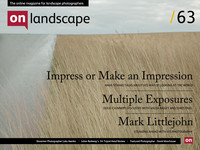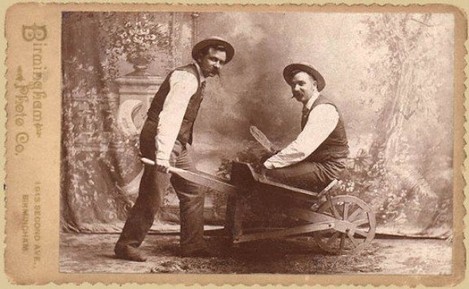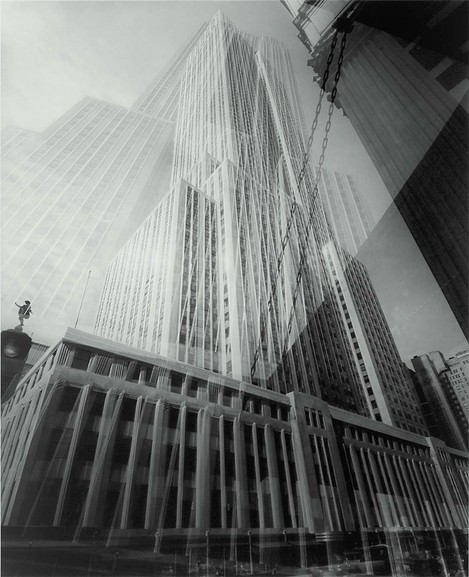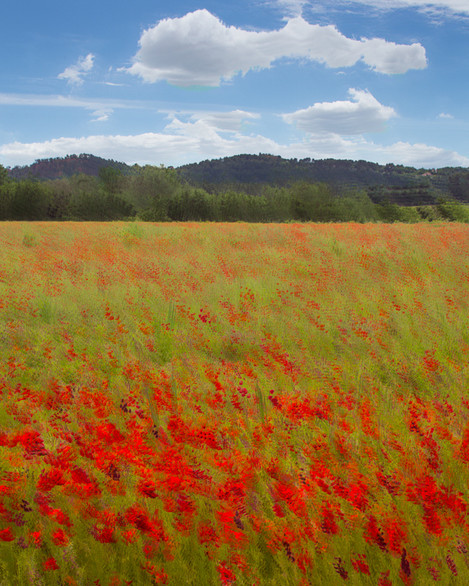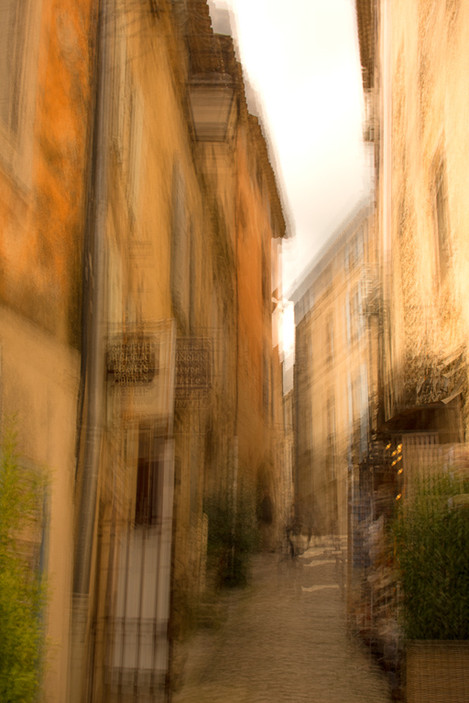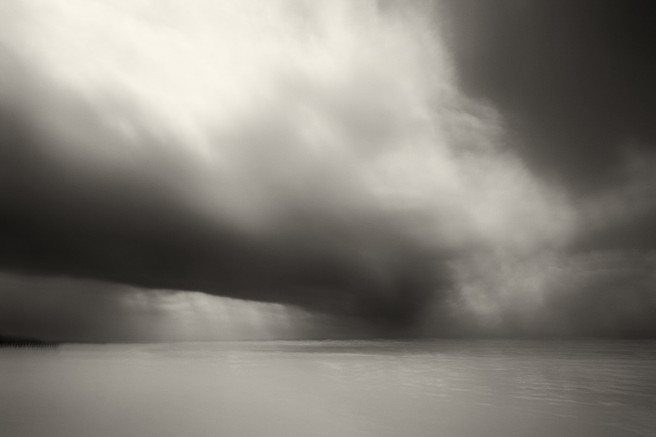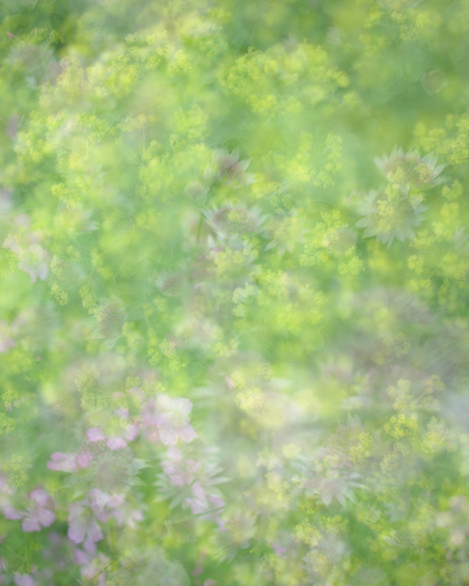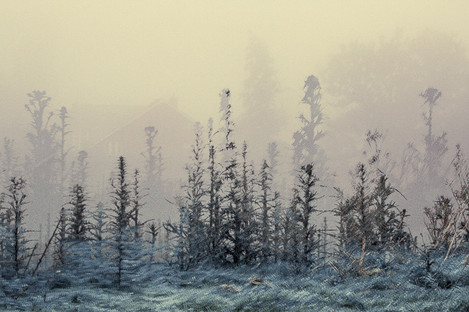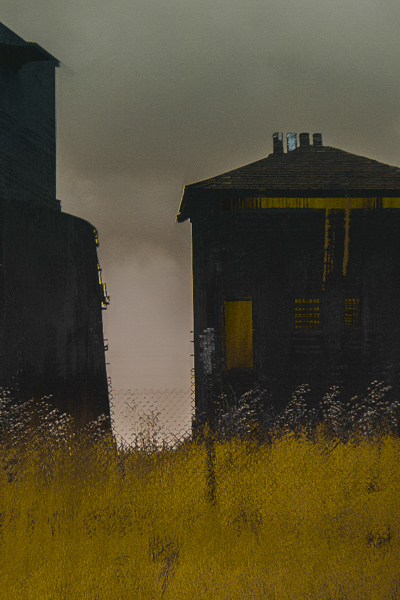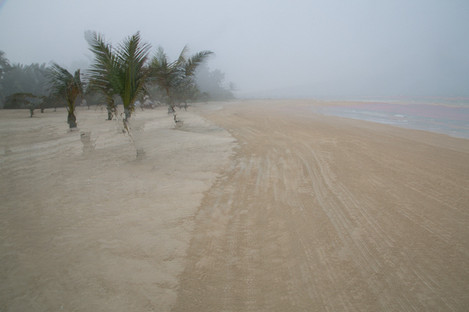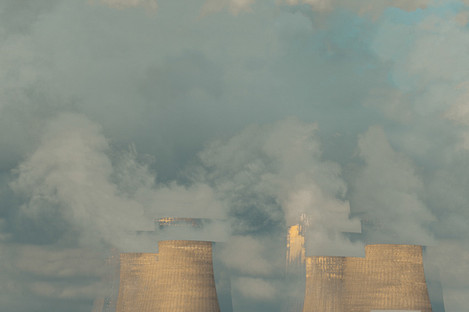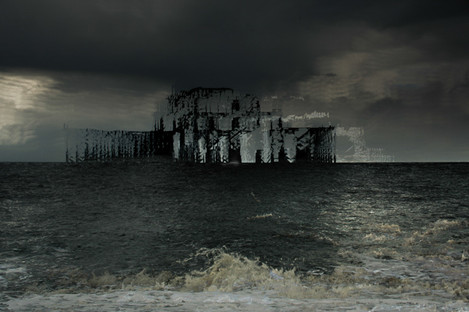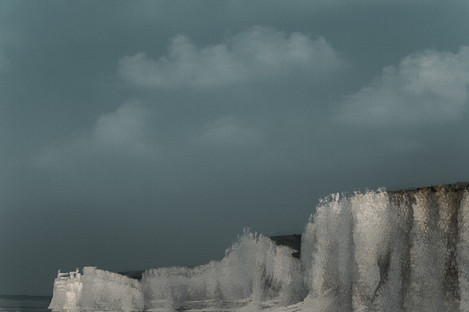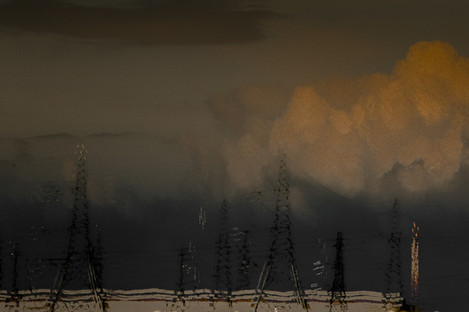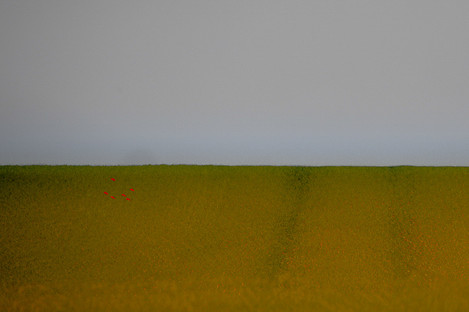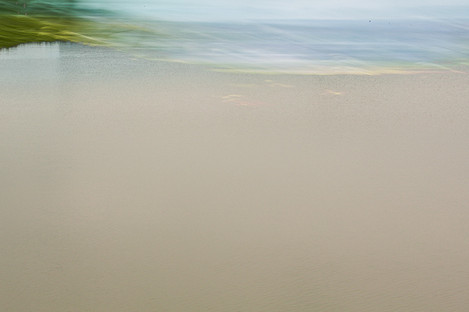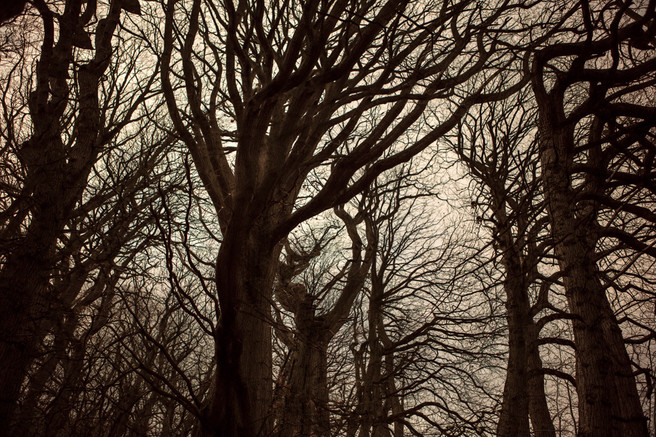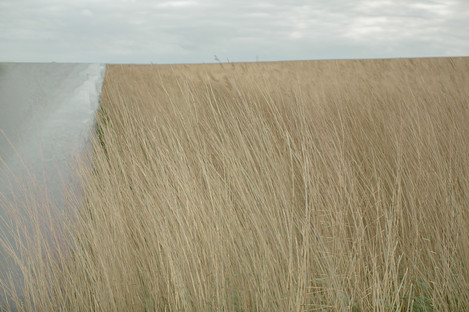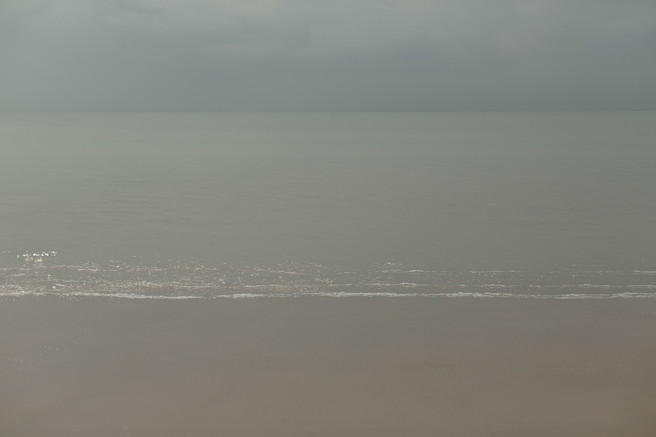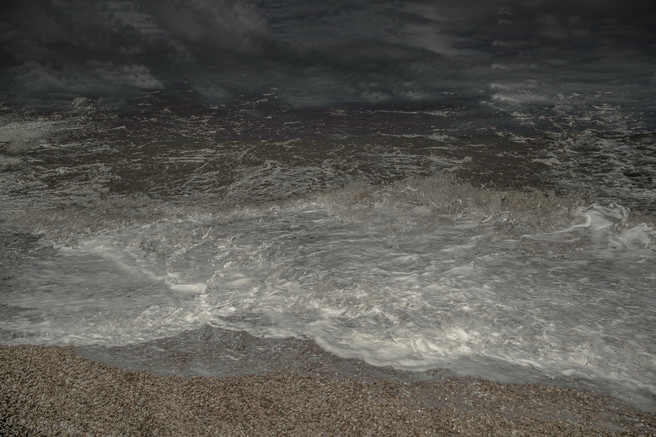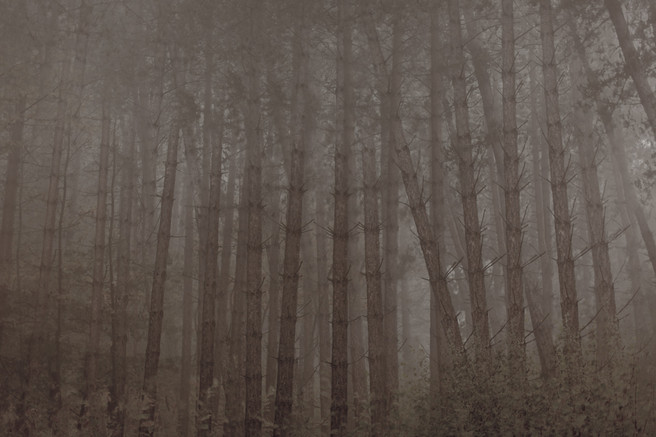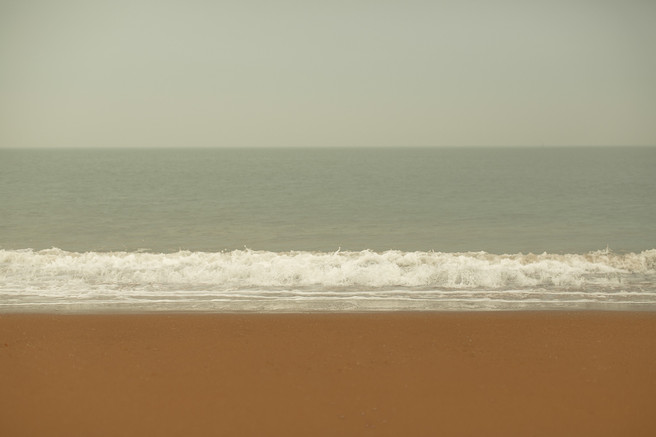Creativity In Camera

Doug Chinnery
I am an artist working with images full of colour and movement in an attempt to express what I see around me. Inspired by artists, in particular the impressionists and abstract impressionists as well as Chris Friel and Valda Bailey, I work in abstraction trying to capture mood and emotion. I live in obscurity with my wife, Beth, and my buddy, Eddie.

Valda Bailey
I used to paint, and I think as a consequence of this, I enjoy trying to push the boundaries of what photography can be. I use multiple exposures and camera movement to help simplify and abstract the detail in a scene. It is a way of working which is controllable to a certain degree, but still has a great deal of unpredictability about it. Post processing is generally limited. I prefer to achieve the structure, detail and composition I want in camera and then tweak the colours and contrast in Lightroom. The consequence of this approach however is an overflowing trash can and a doubtless rapidly deteriorating shutter.
Multiple exposure photography is nothing new. Examples can be traced back to the very beginnings of photography, where a light sensitive material has been exposed twice, overlaying one image on top of another. It seems likely that this ability to create layered exposures was discovered by chance, as the result of a mistake, forgetting a slide had already been exposed.
Soon photographers were playing with the effect, often to create hoax images, by making an individual appear twice in the same frame, for example. Early film cameras had no locking mechanism to prevent accidental exposure of a frame twice due to forgetting to wind the film on after exposing a frame. The resultant images were usually awful mishmashes, often over exposed, but just occasionally a coming together of the subjects in both frames and a balance of the exposures led to a really pleasing creative photograph. It was this that creative image makers strove for, burning through lots of film in the pursuit of a great image.
In recent years, the resurgent interest in ‘Lomography’, especially amongst young photographers drawn to the retro nature of shooting on film using low quality cameras, often from Eastern Europe and toy cameras, has seen multiple exposure images appearing again on photo sharing sites as they experiment with the effects that can be achieved.
For those who love just pure, classic photography, you may be thinking multiple exposures are probably not for you. However, you may find some of the features, especially in the new top end Canon DSLR’s with their blending modes allow you to achieve things in camera which you were having to toil away at in Photoshop. The feature is not just for quirky or artistic and creative photography by any means.
Multiple Exposure Photography with Digital Cameras
Many modern digital cameras now have the facility to shoot multiple exposures. To find if your camera has the function just check the manual or Google it. In most cases, the ability of the camera is limited to overlaying one image on top of another, much like the look achieved in exposing a frame of film multiple times. Many will allow just one mage to be overlaid on top of another while some will allow more than two frames to be overlaid. You will also find that some of the more advanced cameras will provide some assistance in helping you to underexpose each frame to help avoid over exposure.
If you use the popular Hipstamatic app on your iPhone you can treat yourself to an additional function which allows you to overlay one shot on top of another, using the Hipstamatic lenses and ‘films’.
What about the main brands, Nikon & Canon? They too have multiple exposure facilities in many of their bodies. Taking Nikon first, many of their DSLR bodies have the function (check your manual) including the D800. Some, such as the D800 have also incorporated a couple of blending modes. These dictate how the pixels in each frame interact with the pixels in the frame directly beneath them. By varying the blending mode and depending on the brightness levels in the subject, different effects to simply overlaying one image on top of another can be achieved.
However, Canon have taken multiple exposures further, particularly in this area of blending modes. Recent models, such as the 1dx and the 5d mk3 have four blending modes which expand the creative scope of the camera considerably. Bodies such as the 6d have just two modes. If you are interested in pursuing this technique it is important you double check the capabilities of the body you are considering investing in. The Canons also have the facility to blend from two to nine exposures, further expanding the creative potential. In Live View you are able to select your ‘base frame’ and then as you pan the camera you can see the next image being overlaid onto the base image, which helps enormously with composition, something which was impossible with film.
Canon Blending Modes
The four blending modes in the 1dx and 5d mk3 are: -
Additive
which mimics the effect of laying one exposure on top of another in film photography without any interaction between the pixels in each layer. The top layer has a slight transparency so the image below can be seen through the top layer. No regard is taken for exposure in each frame so there is a risk of over exposure in bright areas overlapping. The camera does allow you to adjust the exposure of each frame before you expose it to help balance out the image. You should also note that in this mode it takes the camera longer to write to the card than in the other modes.
Average
In this mode, the camera provides assistance with calculating a more ‘correct’ exposure and it is useful if you plan to photograph the same scene with little or no movement of the camera. The exposure will be balanced out in an effort to prevent overlapping bright areas from over exposing. Overlapping bright areas will appear if just one frame had that level of brightness while any non overlapping dark areas will be darkened. This mode is ideal for those images where you have the camera mounted on a tripod with a wide field of view and, say, a snow boarder moving through the frame doing a somersault. The camera will expose the image correctly with the snowboarder appearing correctly exposed in each position in the frame as you fire the shutter. Think of the time this saves compositing such images in Photoshop.
Bright
This is the mode you would normally select for darker scenes, say night photography, where you want to superimpose bright objects. To illustrate, think of those images showing the full moon rising over a landscape where the moon appears as multiple discs as it climbs through the sky. This works because the mode prevents any bright areas overlapping from increasing in brightness. It also prevents the night sky from becoming too bright, in our example. In this mode, and in ‘Dark’ below, you may see some unnatural colours resulting in areas where colours overlap.
Dark
This mode combines the darker areas of frames as they overlap while at the same time suppressing or ignoring bright areas. Bright, overlapping areas don’t increase in brightness. The effect is the opposite of ‘Bright’ mode. As with ‘Bright’ mode, overlapping colours may change (and this may or may not be an issue).
When switching on the function on a Canon you have some other options to select.
function/control
With this selected you can take separate exposures and check each one on the monitor. It is ideal where careful composition is required as you can see your next image being overlaid on the images below and so position the frame carefully. You can also adjust the exposure for each image.
continuous shooting
This shooting mode is selected when you need to fire the frames in rapid succession without reviewing each frame, such as when shooting sorts action, for example. (A golfers swing etc). Live view, image review after each shot and menu operations are disabled during the shooting sequence.
You can shoot in RAW+jpeg if you wish and if you shoot in the lower resolution raw formats the files are combined into a full resolution raw file at the conclusion of the sequence. You are also given the option to save all of the source files individually in addition to the combined multi-exposed image, or they can be discarded automatically by the camera once the multiple exposure has been blended in camera. As you are able to select your source file from the memory card to be the first image in the sequence you can choose a previous blended multiple exposure image and then add to this more frames to push creativity even further. Canon have really tried to give us as much scope as possible.
For a discussion of Canons modes and screen shots of the menus, along with some sample images of what can be achieved, take a look at this article by Rudy Winston at Canons Digital Learning Center. http://learn.usa.canon.com/resources/articles/2011/1dx_multiple_exposures_article.htmlp
Creative Use of Multiple Exposures
So how can we explore the creative use of multiple exposures and the blending modes, if our camera has them? Well, two photographers in the UK have emerged in the last twelve months as leading proponents of ‘ME’ photography, Chris Friel and Valda Bailey. I have been able to interview them to help us understand the process and how they use it in their work. Firstly, Valda Bailey.
Valda Bailey
DC: Thank you for agreeing to being interviewed for the article. Can I start by asking what it is about the multiple exposure technique that makes it of interest to you?
VB: Well thank you for asking me; I hope that some of the readers of On Landscape are going to be interested in what I have to say! The primary appeal of ICM/multiple exposure for me is the opportunity to create something that is unique. I think it's fair to say that my view of what photography is - or could be - changed completely the day I came across Chris Friel's work in a magazine about two years ago. Until that time I had never engaged at all with landscape photography because I had always thought that most of it was predictably similar. This, of course, is a sweeping generalisation and it is only now that I have become a lot more familiar with the genre that I realise what a misguided view that was and how much original work is out there if one knows where to look. But back in the day my understanding was that it embodied an endless succession of prominent foreground boulders, sweeping vistas and orange skies with little scope for individual expression. Until I started using alternative techniques I spent most of my time doing street photography as I felt it offered me an opportunity to capture something unique. Now, the unpredictability of multiple exposure/ICM offers up the possibility of capturing similarly individual landscape images.
DC: Looking at e technical side first, what camera are you using for multiple exposures and why?
VB: I use a 5D3 because it gives me the option to shoot multiple exposures in various modes. I think I'm correct in saying that only the 5D3 and the 1DX present the option to employ four different blend modes in camera. Much as layers can be blended in Photoshop, the 5D3 allows me to select a bright mode to prioritise the bright values in a scene or a dark mode to prioritise the dark values. I find this creatively exciting, especially when combined with other variables such as slow shutter speeds, ICM and variable ISO settings .
DC: Without giving away all of your hard earned techniques, are there any tips or insights into your techniques you can give those wanting to try multiple exposure photography, to help them?
VB: Certainly don't be dispirited by the speed with which your trash can gets filled up! I consign an awful lot to the reject pile before I find something I think might work. Out in the field I do struggle a bit in harsh contrasty light, but there's nothing new there. Canon users with different blend modes can experiment a bit - if an image isn't working in one mode, there are a few others to try. The number of exposures is another variable to bear in mind. The 5D3 offers up to 9; I think Nikon users can select up to 10. Perhaps my more successful images are those where I haven't waved the camera around too extravagantly, although having said that, one can get some really pleasing abstract shapes by pointing the camera in an unexpected direction for the final exposure in a set.
DC: Why combine the exposures in camera and not in software?
VB: It's a good question and I suppose the short answer for me is because my Photoshop skills are insufficiently adept. Another consideration is that I would rather spend my time behind a camera than in front of a computer screen but there is also a pleasing element of chance attendant when the images are combined in camera. My travails in Photoshop usually end up seeming to me to be very contrived and somehow lack the spontaneity that I feel is achieved with in camera multiple exposures.
DC: What kind of post processing to you do to your multiple exposure images?
VB: I edit about 90% of my images solely in Lightroom; most of my time invested is spent in the selection process - I have yet to acquire the ability to be able to retain or reject an image with any great proficiency. Defining the 'keepers' is certainly something I found a lot easier when I was shooting more conventionally. My post processing tends to be limited to a contrast adjustment and some furtive tweaking of the white balance and colour sliders. I have found the more time I spend tinkering with an image, the more laboured it becomes. Of course, once again this may be down to my deficient Photoshop skills.
DC: Do you combine multiple exposures with ICM (Intentional Camera Movement) techniques?
VB: I have been doing so more and more, but there seems to be a fine line between the ICM bringing a subtle depth and blur to the image and it producing a complete out of focus image with no definition at all.
DC: What is the most frustrating thing about multiple exposure work?
VB: It's frustrating that it isn't more widely accepted, but it was ever thus. I'm not suggesting for one moment that multiple exposure is on a par with Impressionism but movements in art tend to take a while to be accorded mainstream approval so it's not too surprising that it should be any different in photography. I have little patience with elitism in art and it would be nice to think that one day all approaches could be equally valid.
My other vexation is the apparent impossibility of honing the technique to the point where I don't have to taken 30-40 shots in the hope that one will be usable. I'm tentatively optimistic that this appalling statistic will eventually improve - indeed it has improved greatly since I first began - but I fear my shutter will have given up the fight before I get there!
DC: Do you have to approach shooting portraits in a different way to shooting landscapes?
VB: It has to be said my experience with multiple exposure portraits is limited. I have done a fair amount of portraiture on the street but have only been called upon to combine it with multiple exposure quite recently when Tim Andrews asked me to contribute to his 'Over the Hill' project. This was the first time I had been formally asked to take anybody's portrait and to be joining such an esteemed group of photographers was a huge honour although the weight of expectation felt considerable. I was therefore slightly relieved when Tim suggested the location (Farley Farm) and also asked if I would mind if he was naked for the shoot. This obviously meant fewer decisions for me so I was quite content for Tim to take charge of certain elements of the shoot. It did occur to me that photographing a naked man using multiple exposures was a potential minefield and the results were very likely to end up, at the very least, being anatomically improbable. I figured Tim would probably be happy enough to be doubly or triply blessed although as it happened everything seemed to blend together ok and all important appendages, digits and limbs were thankfully present in their correct numbers.
DC: Who are your inspirations for this style of creative work, both in art and photography?
VB: Chris Friel, obviously. His images continue to be a endless source of inspiration and I constantly marvel at the range of his artistic vision. He has been a huge influence and unfailingly kind and supportive of my endeavours. I love the work of Peter Scammell. I suppose I tend to be equally influenced by works of art - the colours in a Cezanne painting perhaps . Or a Diebenkorn or a Kandinsky. I also love Van Gogh, Chagall, Picasso, Bonnard and Matisse. Other photographers whose work I admire are not necessarily those using multiple exposure - possibly because they are relatively few and far between - but they would include Fay Godwin, Sarah Moon, Alexey Titarenko, Susan Burnstine, Ernst Haas and Saul Leiter. I also draw on the memories of the two weeks I spent in New York with Jay Maisel. One of his great influences is afore-mentioned Ernst Haas and Jay was lucky enough to be tutored by Josef Albers when he was studying painting at Yale, so he knows a thing or two about colour!
DC: What is it like being at the forefront of a creative style, rather than doing what everyone else is doing?
VB: I don't know about forefront - Chris is certainly right up there, along with several others I can think of and they cast a pretty big shadow! Mixed emotions really. When my confidence is buoyant and things are going well, I quite enjoying ploughing what often seems to be a lone furrow. However when the creative slough of despond descends I find myself questioning my approach and quietly pondering about the validity of the direction my work has taken.
DC: Do you ever hit a creative 'wall'? How does it affect you? How do you get over or around it?
VB: Frequently! As I mentioned above, I can happily mow along for weeks thinking my work is on the right trajectory then one day, for no apparent reason, I'll see it with different eyes and wonder what on earth it is I am trying to achieve. That state of mind seems to bear little relation to how many hits my website is getting or number of Flickr views - it just seems to bubble up out of nowhere. It often coincides with a feeling that what I do is perceived as gimmicky and gratuitously employing alternative techniques but I am slowly coming to the realisation that this is how I wish to express myself. Much like an artist might choose to render an image in charcoal or acrylics or oils and paint in a certain style, I am slowly managing to convince myself that using multiple exposure and/or ICM is simply the way I chose to use my camera. 'Painterly' is a pretty grim and over-used adjective, but I think the failed artist in me is - rightly or wrongly - is trying to create with my camera what I was unable to do with a paintbrush. I usually take a break for a few days, plough through some of the photography or art books in my collection and eventually go out shooting again, perhaps with a different lens or with a different objective.
DC: If someone loves creative photography but finds it hard to break away from more conventional styles of image making, what would you encourage them to try doing to help them develop a creative approach?
VB: It's not easy - we bumble along happily doing what we do, producing our images and eventually become associated with a certain artistic style. And that's not a pejorative observation - I think it's important to stick with and master one's chosen direction. But to break away from that cosy niche and offer up a wholly alternative vision takes courage. Perhaps the answer is to find someone whose work inspires and spend some thinking about what it is one is trying to achieve. And then just mess around with the camera - experiment. Have fun. It costs nothing these days apart from time. There are Flickr groups dedicated to just about any direction one wants to pursue so it's not too hard to find a sympathetic environment.
You can see more of Valdas work here and on her website at http://www.valdabailey.co.uk/.
Chris Friel
I then had chance to interview Chris Friel and here are his thoughts on ‘ME’ photography.
DC: Thank you for agreeing to being interviewed for the article, Chris. Can I start by asking what it is about the multiple exposure technique that makes it of interest to you?
CF: It’s similar to ICM in that it has the potential to simplify an image, which is something that interests me.
DC: Looking at the technical side first, what camera are you using for multiple exposures and why?
CF: Canon 5d mk3. I upgraded from the mk2 because of the mk3s capacity to take multiple exposure shots
DC: How did you come across the technique?
CF: I had a play with the multiple exposure option on the Fuji X1 pro and liked some of the results, even though you can only layer a couple of images and you have no control over how they interact with each other. I saw a mention of the ME function in some review of the canon, and bought it the next day. At that point I hadn’t really come across anyone else doing anything much with the technique.
DC: Without giving away all of your hard earned techniques, are there any tips or insights into your techniques you can give those wanting to try multiple exposure photography, to help them?
CF: I only started experimenting at the end of last year so its early days for me.
Obviously the technique employed is very dependent on the outcome you wish to achieve, but the most interesting options are light or dark overlays, which work the same as in Photoshop. I would also advocate moving the camera a fair amount between each shot or you just end up with a mess
DC: Why combine the exposures in camera and not in software?
CF: Laziness and the ability to see the end result in situ. The canon does actually have the option the save the original files as well as the resulting ME image. Though this is not something I do. Spending time combining a bunch of images in photoshop is my idea of hell.
DC: What kind of post processing to you do to your multiple exposure images?
CF: ME on the canon produce some strange colour shifts, so most of my post is colour balance related. The landscapes generally need little or no correction. The portraits are treated with various lightroom presets which I have set up to sort out skin tones to my liking. Though my colour blindness makes for some strange end results
DC: Do you combine multiple exposures with ICM (Intentional Camera Movement) techniques?
CF: I have tried and failed
DC: What is the most frustrating thing about multiple exposure work?
CF: How quickly I am going to destroy the shutter on my camera
DC: Do you have to approach shooting portraits in a different way to shooting landscapes?
CF: Landscapes are generally handheld with a 50mm lens. Portraits tend to be shot with a 24mm lens on a tripod. One has to be a more subtle when shooting the human face, so the movements between frames are smaller, and I have to work quicker because people get bored sitting still.
DC: Who are your inspirations for this style of creative work, both in art and photography?
CF: I saw a show by the Spanish photographer Pep Ventosa in 2010 and some of his images really stuck in my mind. Rob Hudson in the UK inspired my early attempts at tree shots. Tina Kazakhishvili in Georgia, John Reiff in the states, Josep Linares in Spain and Isa Marcelli in France are all producing interesting ME work.
I am unsure how any of these people produce their final pictures, but probably not in camera.
British photographers Valda Bailey and Caroline Fraser are both producing interesting work in camera using the Canon.
In terms of painters, I have probably spent too long looking at the work of Stanley Spencer, Lucian Freud, Frances Bacon, Marianne Kolb and Andrew Wyeth.
DC: What is it like being at the forefront of a creative style, rather than doing what everyone else is doing?
CF: I think you are asking the wrong person
DC: Do you ever hit a creative 'wall'? How does it affect you? How do you get over or around it?
CF: I hit a creative wall most monday mornings, it drives me to drink, and buying a new camera generally helps. Alternatively going for a long walk in the rain with a camera usually resolves the problem.
DC: If someone loves creative photography but finds it hard to break away from more conventional styles of image making, what would you encourage them to try doing to help them develop a creative approach?
CF: Stand in one spot with any prime lens and an ND10 filter and wave the camera around at random. Do not leave that place until you have one image that excites you. Repeat as necessary. If you have access to a camera that does ME do the same but without the ND10
You can see more of Chris’s work, in addition to those images shown here, on his website at www.chrisfriel.co.uk and prints of his images can be purchased via www.dougchinnery.com (he plugged).
So, in conclusion, why use multiple exposure techniques in your photography?
They can be used conventionally to achieve effects (such as the moon phases across the sky etc) simply in camera that take sometimes considerable work in Photoshop.
Much more than that though is the ability to use these functions to help us break free from classic landscape image making. Of course, such images are perfectly fine and I shoot them myself. However, I would advocate just sometimes leaving the constraints of sharpness, depth of field worries and needing to portray the world in exactly the same way as 98% of landscape photographers do. I would encourage venturing into using the camera in ways that show the world differently, that allow the viewer to make their own mind up about what is happening in the scene, rather than exposing every detail in stark sharp Technicolor detail, leaving nothing to the imagination.
Overlaying frames can produce awful results, in fact much of the time they do. However, as you get used to the process and the blending modes you become more adept at choosing which mode is best suited to the effect you want to create and how many exposures to use. You also develop a sense of whether or not to move the camera between exposures.
No one can copy your work. Indeed, even you can’t replicate an image, even seconds later. Each image is truly unique and with that comes a certain level of creative satisfaction. Of course, you will have to endure the ridicule of those who ‘don’t get it’. Posting your images online is more likely to be met with a stoney silence than the ‘wow, great shot’ comments which may pepper your sunrise and sunset images. But then we have to ask who are we taking photographs for? Them, or us? But maybe that should be the subject of another article?
Articles on Multiple Exposure and ICM in Landscape Photography
- Multiple Exposure, Layers, Textures ….. and all that Jazz
- Doug Chinnery Featured Photographer
- Creative Landscape Photography Webinar
- Creative Landscape Photography Webinar pt 1
- Doug Chinnery - Featured Photographer Revisited
- Doug Chinnery - lecture at Graham Cook Exhibition launch

